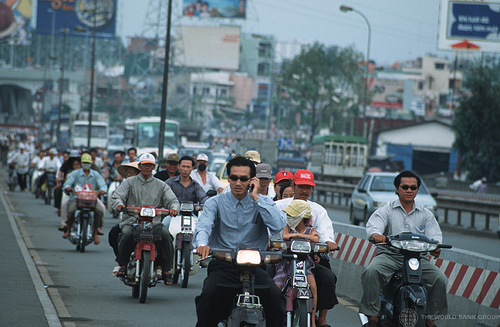News
 A Regional Consultation Meeting was held in Kuala Lumpur, Malaysia on January 27-28, 2011 to inaugurate a program that aims to strengthen the capacity of governments to factor climate change in their planning.
A Regional Consultation Meeting was held in Kuala Lumpur, Malaysia on January 27-28, 2011 to inaugurate a program that aims to strengthen the capacity of governments to factor climate change in their planning.
This regional program sponsored by the World Bank, the Energy Sector Management Assistance Program - ESMAP, and the Asian Development Bank, is designed to strengthen low-carbon planning capacity of relevant agencies of Indonesia, Malaysia, Philippines, Thailand, and Viet Nam to help mainstream climate change considerations into development planning.
The Low-Carbon Planning training program is expected to benefit policymakers and practitioners and will lead to:
- The state-of-the-art economic and planning framework,
- Enhanced capacity of policy makers to update and utilize such framework for policy/project evaluation,
- Increased knowledge sharing, policy dialogue, and cooperation in the region.
The program has three components: (i) model and software development, (ii) country applications, and (iii) capacity building.
The Workshop’s objective was to develop a low-carbon economic modeling framework tailored to specific country needs using a planning tool called EFFECT– Energy Forecasting Framework and Emissions Consensus Tool, presented by John Rogers, a Senior Climate Change Specialist, at the World Bank. The EFFECT Model is an Excel-based, bottom-up, engineering style model designed to support open and transparent modeling and comparison of greenhouse gas (GHG) emissions growth for a range of development scenarios. The EFFECT Model focuses on sectors that contribute to and are expected to experience rapid growth in emissions. The model was initially developed for work with the Government of India to support consensus building and planning in key sectors of the economy and to assess the impact of policy choices on GHG emission levels. It has since been used in a number of countries, including Brazil and Poland, to support similar objectives.
The EFFECT model is developed by ESMAP together with World Bank Institute and the Climate Change Team plus the other tools derived from the Low Carbon Development work that the World Bank has conducted in seven leading developing economies.
The content of this presentation can be accessed here.
